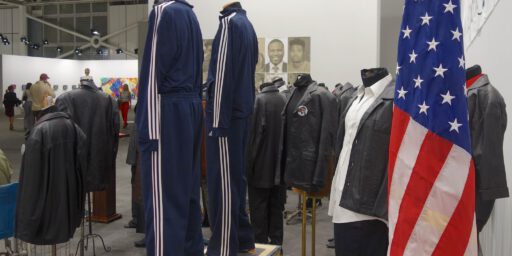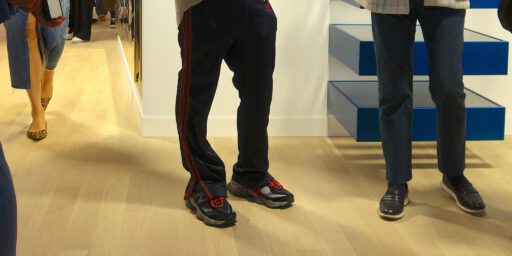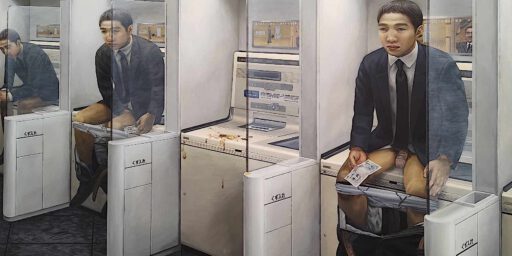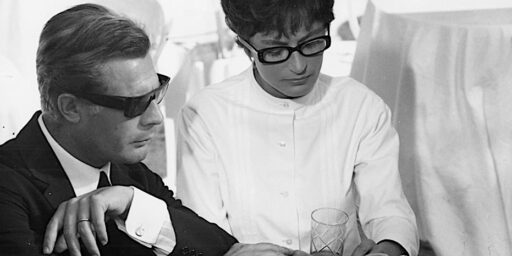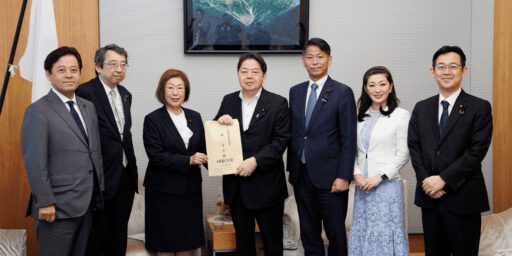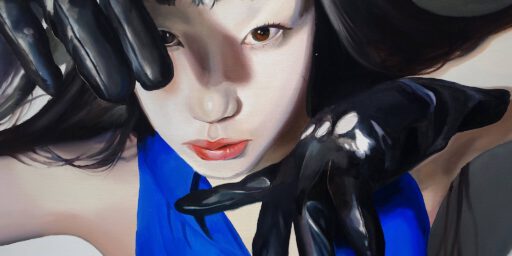優作「ディスリンピック2680」@ 風間サチコ展・「原爆の図 丸木美術館」 KAZAMA Sachiko's Excellent “Dislympia 2680” @ Hiroshima Panels - Maruki Museum

KAZAMA Sachiko 風間サチコ 「ディスリンピック2680」2018、木版画、240 x 640 cm
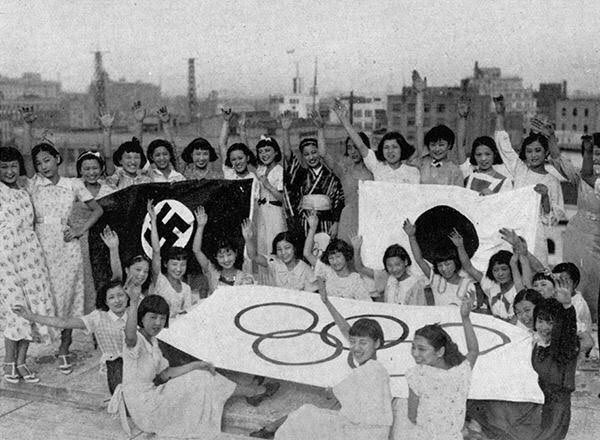
(2:35 min)
振り返れば、まさに伝説の展覧会とも言うべき、2012年 無人島プロダクションでの風間サチコ展「没落THIRD FIRE」。そこで発表された傑作「噫!怒濤の閉塞艦」に始まり、次から次へと展示が続きます。
2013年 六本木クロッシング 森美術館
2014年「We can make another future: Japanese art after 1989」クイーンズランド州立美術館、ブリスベン、オーストラリア
2015年 Asian Art Biennial、 台北
2016年 光州ビエンナーレ、韓国
2017年 ヨコハマトリエンナーレ
各年、キュレーター、鑑賞者共に高く評価されています。
2012年12月に書いたレビューも参考に。
https://art-culture.world/articles/kazama-sachiko-exhibition-mujin-to-production/
相変わらず、風間さんの創作パワーや日本現代社会に対しての鋭い目は素晴らしく、毎回、歴史認識を高めていて、彼女のアーティスティック・テンションや才能にのめり込んでしまいます。
今回の開場である「原爆の図丸木美術館」は、アーティストの良心を悩ませ続け、我が国の美術史にとどまらず、世界のアート・ヒストリーに刻まれる、未来へと歴史を伝える近年ますます重要な場となっています。
また、横山大観、レオナール・フジタ同様、戦争協力者レニ・リーフェンシュタールの「ファッショ・美学」(fascio estetico)を忘れないために、ドイツ人がベルリンに作った大胆な「Topographie des Terrors」(テロのトポグラフィー)の記念所・歴史博物館・資料館には、連日、世界から大勢の観光客が見学に訪れているにも関わらず、未だに、東京で同じように日独伊ファシズムの時代を記録、勉強できる場所は、わざと存在せず、ある視点から見れば、「原爆の図丸木美術館」は、少しだけ(!)、その役割を果たしていると言えます。
テロのトポグラフィー
https://www.travel.co.jp/guide/article/19791/
http://www.topographie.de/en/
https://en.wikipedia.org/wiki/Topography_of_Terror
25年前、私は故丸木位里・俊氏にお会いする機会があり、その時、位里さんに描いていただいた作品を今も大切に保管しています。
丸木夫婦の創造性を養う空間に、見事に溶けこめる風間サチコ 。
彼女のアプローチは、鑑賞者に政治的なパンチを与え、変えさせたいというものではありません。
風間さんの目標は、鑑賞者自身の批判的思考を育てることです。そして今回の企画展目玉は、東京オリンピック2020に合わせ、様々な歴史的傷をピンポイント爆撃のように寓意的に仕上げた作品、「ディスリンピック2680」。
特に、私にとっては身近な「祖先」である、ギ神のアンブロシアから日独伊ファシズムまでの暗喩をいたる所に散りばめながら、ヒトラーがなぜ、ギリシャを全滅させなかったのかという理由も、非常に巧妙なやり方で、この作品に含ませています。
さらに、日本のスポーツメーカー、アシックスの社名は、「Anima Sana in Corpore Sano」(健全なる精神は健全なる身体にこそ宿るべし )の頭文字A・S・I・C・Sを並べたもので、この言葉はイタリアのファシズムだけでなく、ドイツ・ナチスを巡る「支配民族」(Herrenvolk / -rasse)という恐ろしい「着想」や「優生学」であり、「ディスリンピック2680」作の中にも概念化されています。
批判的思考を達成したら、歴史認識プロセスは続行され、そして、鑑賞者自身の物語、祖父母の物語、国家、神道・天皇制のナラティブについて質問を投げかける風間サチコ・ワールド。
批判的思考を学ぶ中で、もちろん、今までの政治的意見を変える必要はありません。
それぞれの人間は、混血の民族グループや地域や国に献上するものではなく、平和憲法と民主主義と普遍的な教えに専心していること、それが風間さんの一つの誠実なアート実践と感じます。
私にとってスポーツは大好きですから、五輪に関しても様々な意見を尊重しますし、のちにドイツのオリンピック選手となった同級生に14歳まで100・200メートル走で勝っていた楽しい思い出もあります。
しかし、ドイツのスポーツ記者に直接聞いた話の中で、ドーピングは、非常に見つけ難いらしく、五輪メダルを取った選手に対して、ある程度の不信感を抱いてしまうことは、根本原理です。
経済的な面でも、ほとんどの場合、五輪は大赤字です。つまり、あなたの喜びは、現在の国の負債に直結。
折角ですから、ここで、現在バーゼル市立美術館で鑑賞できる、風間サチコと同じ存在感を持つケーテ・コルヴィッツの有名な力強い作「Nie wieder Krieg」(Never Again War)をご紹介します。このキュレーターの仕事は素晴らしく、優れた展覧会となっています。
民衆的伝統をもつ木版画の技術を用いたケーテ・コルヴィッツは、ドイツの記念切手になっていますが、日本でもいつか、戦争協力者横山大観作のとんでもない切手より、風間サチコ作の切手が作られたら嬉しいです。
東京から約1時間で行ける「風間サチコ展 ディスリンピック2680」@「原爆の図丸木美術館」。是非、7月8日まで、足をお運びくださいませ。
瑞西、2678年5月23日
亜 真里男
風間サチコ展「ディスリンピア2680」
会期:2018年4月28日~7月8日
会場:原爆の図 丸木美術館
住所:埼玉県東松山市下唐子1401
電話番号: 0493-22-3266
開館時間:9:00~17:00
料金:一般 900円 / 中高生または18歳未満 600円 / 小学生 400円
http://www.aya.or.jp/~marukimsn/kikaku/2018/kazama.html
http://www.aya.or.jp/~marukimsn/index.htm
http://www.aya.or.jp/~marukimsn/top/riyo.htm#access
特別対談「過去、そして未来 ―幻の東京オリンピックをめぐって」
日時:2018年6月9日 14:15~
出演:風間サチコ、安冨歩(東京大学東洋文化研究所教授)
参加自由(入館料別途)
KAZAMA Sachiko “Dislympia 2680”
Maruki Gallery for The Hiroshima Panels
2018/4/28 – 7/8
Address: 1401 Shimokarako, Higashimatsuyama-shi, Saitama 355-0076
Entrance fee: 900 Yen (or 400 – 600 Yen)
Phone: 0493-22-3266 Fax: 0493-24-8371
12 minutes by taxi from the South exit at Shinrin-Koen Station on the Tobu Tojo line, 18 minutes by bus from the West exit at Takasaka Station, 17 minutes by bus from the East exit at Higashi-Matsuyama Station.
(Personally I recommend the taxi ride (about 1.200 Yen) from Shinrin-Koen Station)
http://www.aya.or.jp/~marukimsn/english/indexE.htm
Talk event: “The Past and the Future – On the Olympics of Illusion”
Speakers: KAZAMA Sachiko and YASUTOMI Ayumu (University of Tokyo Institute of Advanced Studies on Asia Professor)
2018/6/9, Sat. 14:15 – 15:30, no reservation necessary
美術館のPRより:
風間サチコは、徹底した独自のリサーチをもとに、主に木版画による漫画風のナンセンスな表現で、現在・未来につながる歴史の暗部を彫り起こすアーティストです。そのユーモアと鋭い社会批評眼を感じさせる作品は、近年、国内外で高く注目されています。
今回発表する新作《ディスリンピック2680》は、優生思想の歪(いびつ)さに着目した風間が、構想期間4年をかけて戦前からの関係資料を収集しリサーチを続け、優生思想の持つディストピア的な理想の国家のイメージを、今まで制作した作品で最大という縦2.4m、横6.4mの巨大な木版画で表現しました。
1940年―皇紀2600年に制定された「国民優生法」、同じくその年に開催される予定だった幻の東京オリンピック。そしてその80年後に開催される2020年東京オリンピック。過去と未来の国家的イベントに思いを馳せながら、作品では架空の都市・ディスリンピアにて、近い未来に開催されるであろうオリンピック「ディスリンピック2680」の開幕式典が、虚実入り乱れたスタジアムを舞台に、皮肉とユーモアを交えて描かれます。健康至上主義の祝祭と人類淘汰の地獄を、鋭く木版に刻んだ新作にご期待ください。
(省略)
協力:無人島プロダクション
より詳細な情報へ:
http://www.aya.or.jp/~marukimsn/kikaku/2018/kazama.html


2018年4月28日オープニングトーク:岡村幸宣(原爆の図丸木美術館学芸員)と 風間サチコ
(3:52 min)
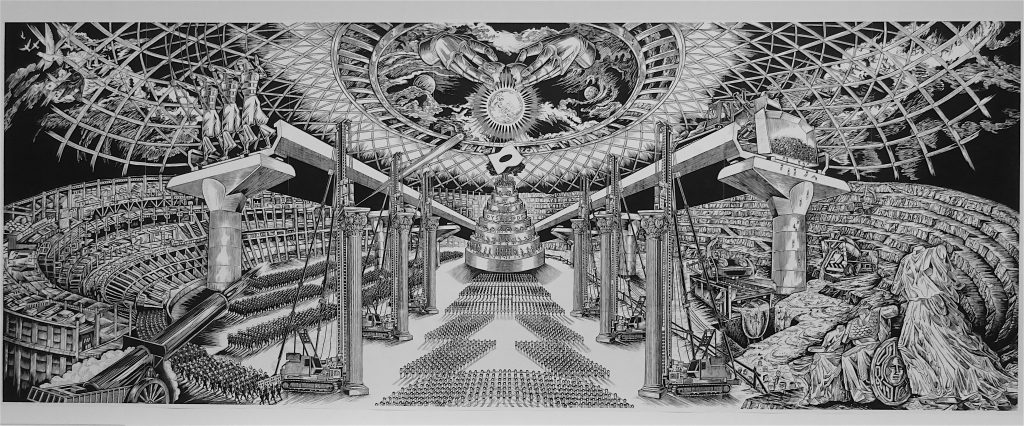
KAZAMA Sachiko 風間サチコ 「ディスリンピック2680」2018、木版画、240 x 640 cm
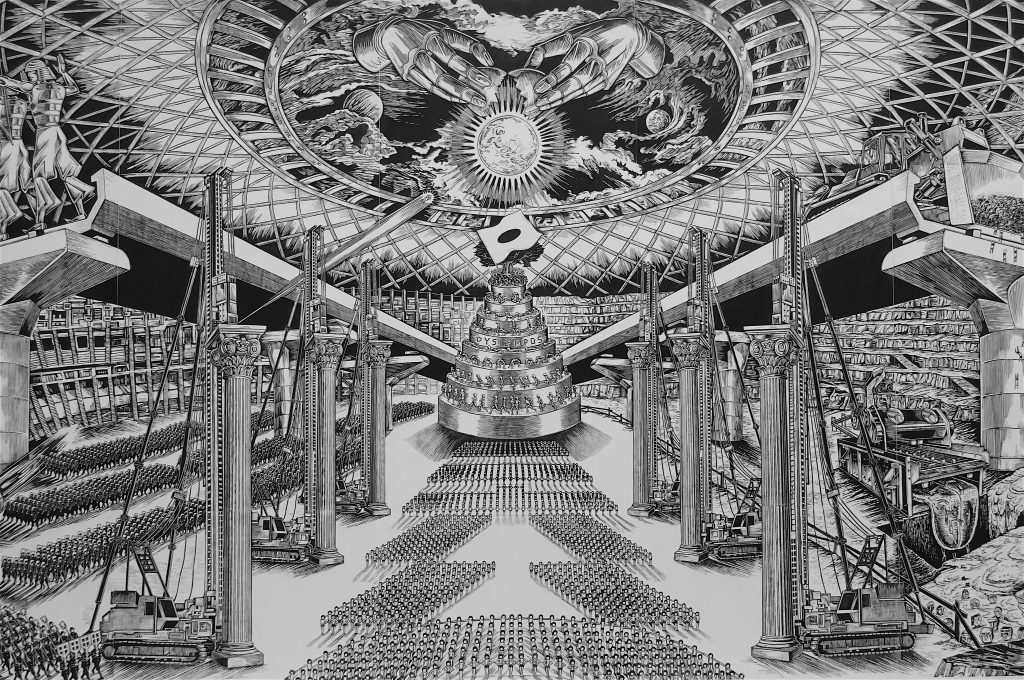
「ディスリンピック2680」部分
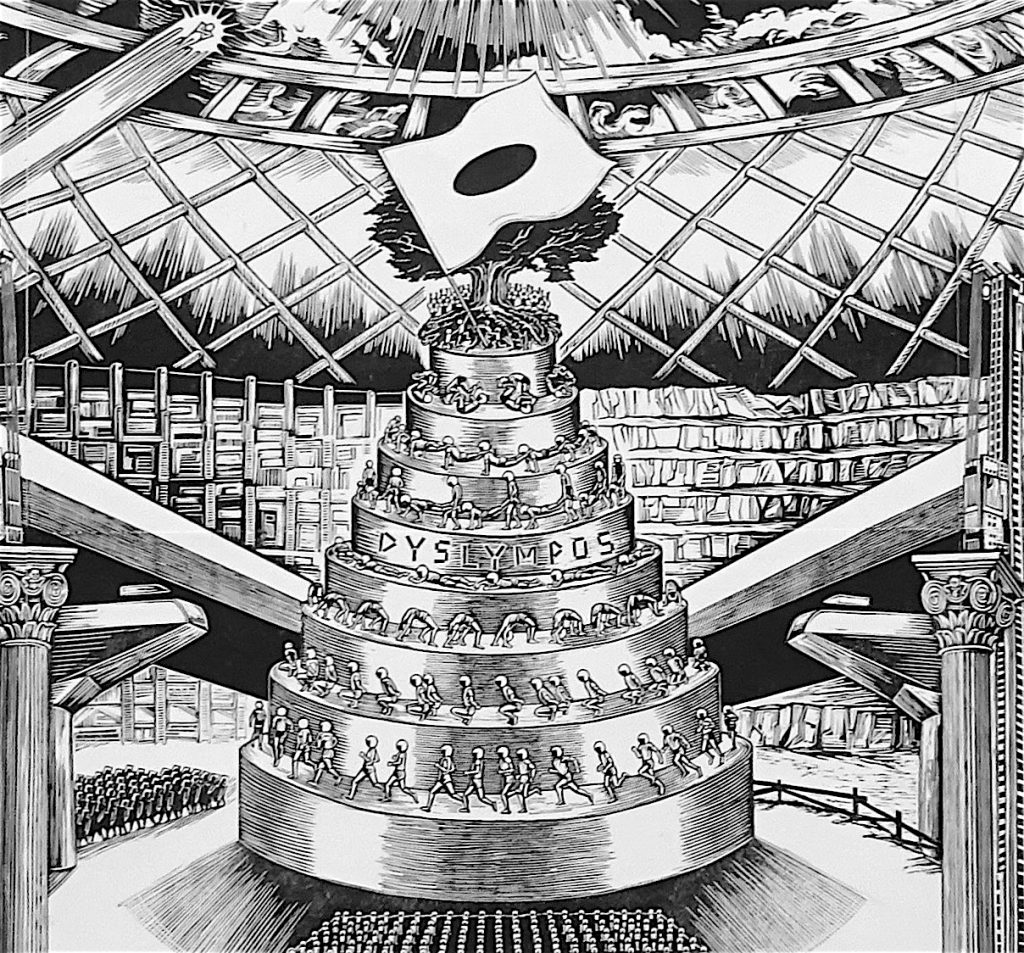


(1:51 min)
(1:00 min)
(1:00 min)
(5:35 min)
(2:49 min)
国民歌「紀元二千六百年」映像+歌詞付き / Kigen Nisen Roppyaku Nen
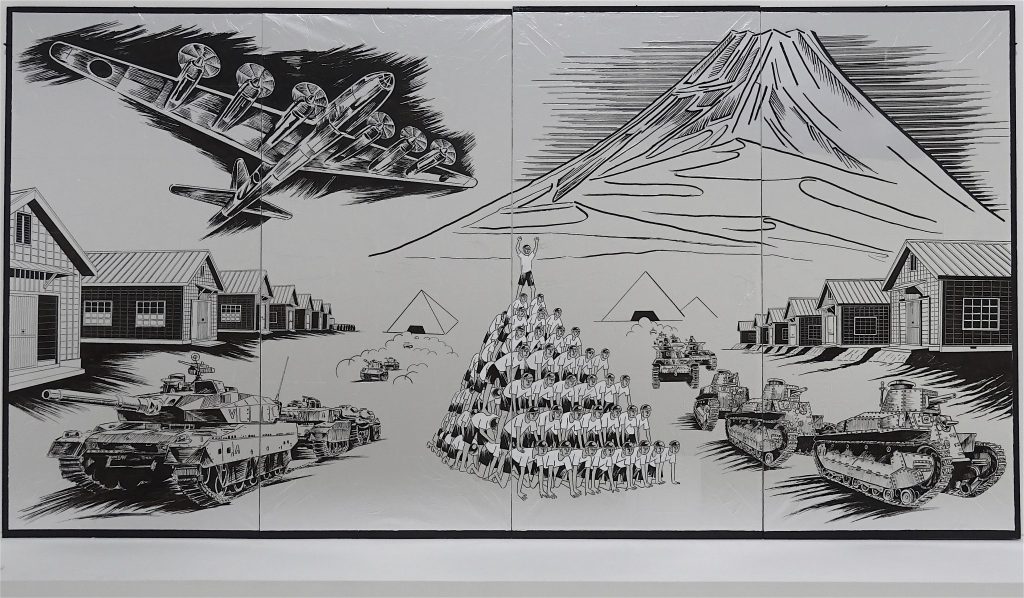
KAZAMA Sachiko 風間サチコ 「人間富嶽」2017、水性顔料ペン、油性ラッカー、アルミ箔、襖、177 x 337 cm
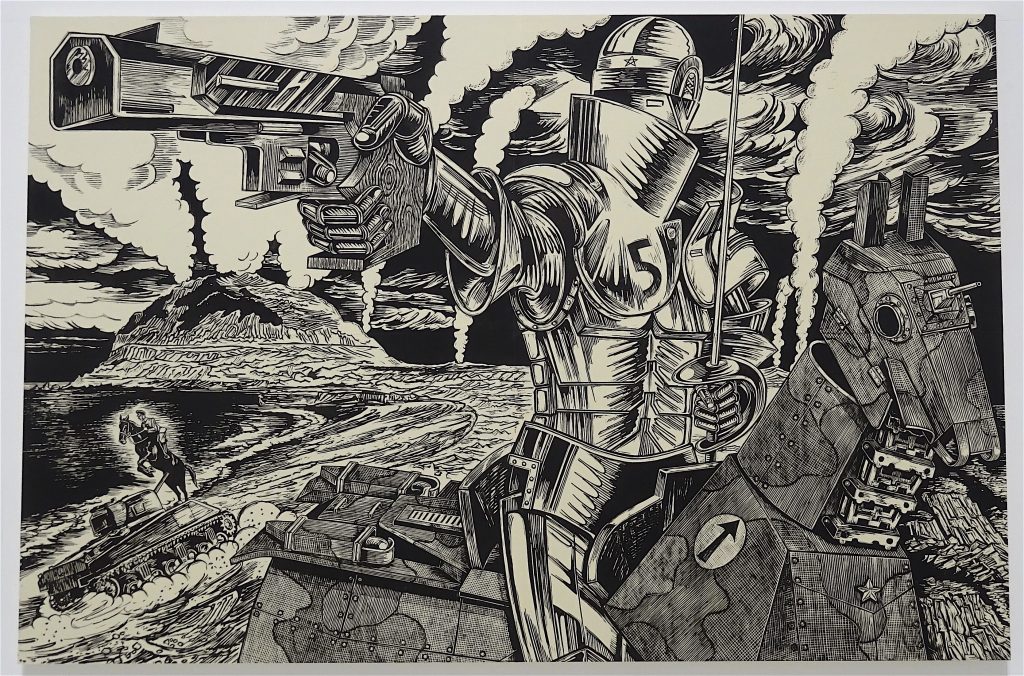
KAZAMA Sachiko 風間サチコ 「決闘! 硫黄島(近代五種麿参上)」2017、木版画(パネル、和紙、油性インク)、121 x 183 cm
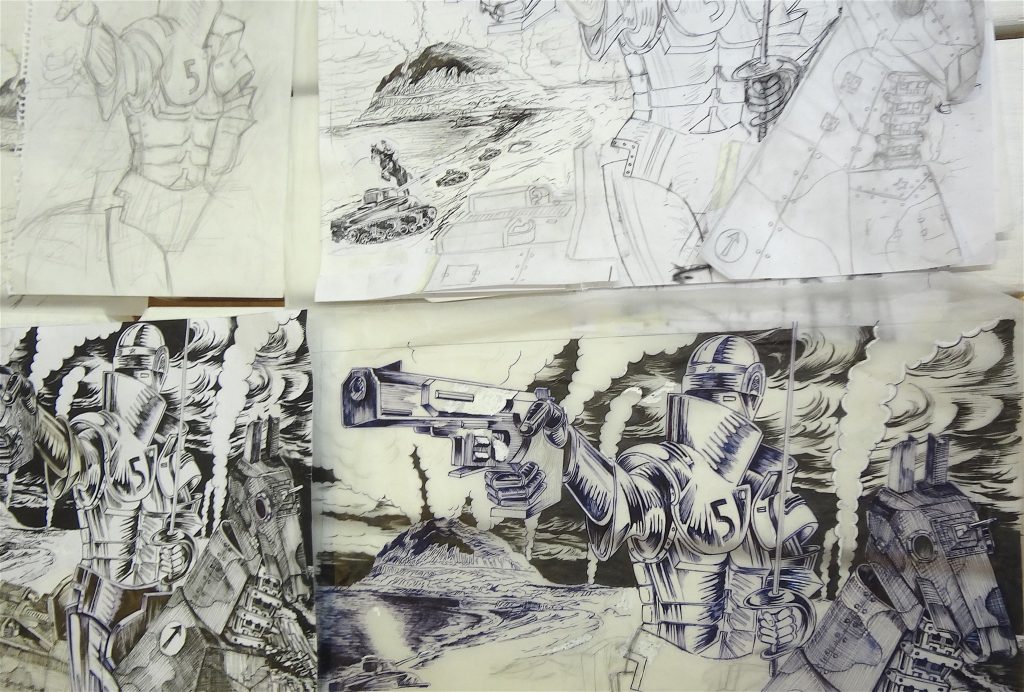
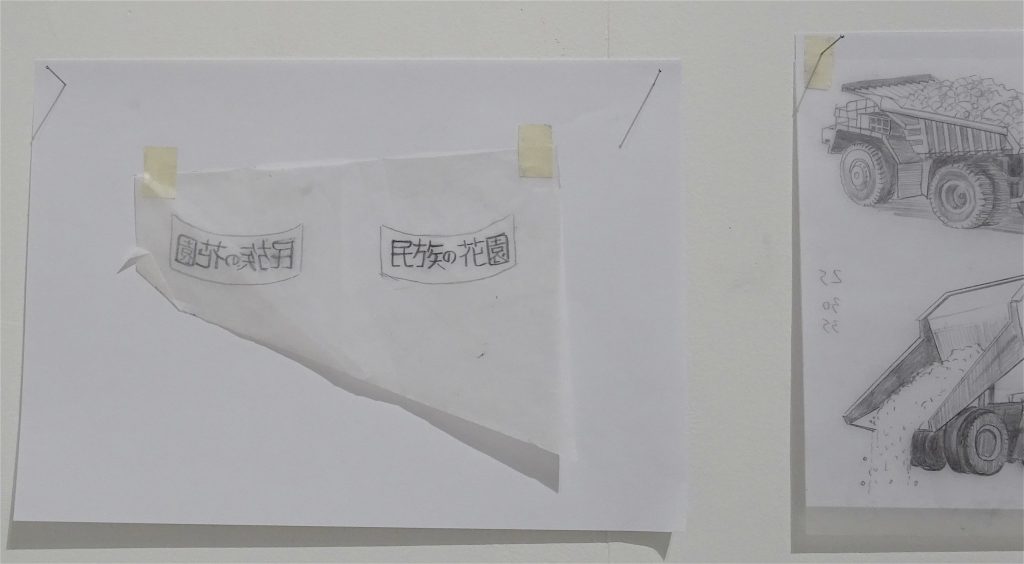

KAZAMA Sachiko at work 風間サチコ、制作中、2016年
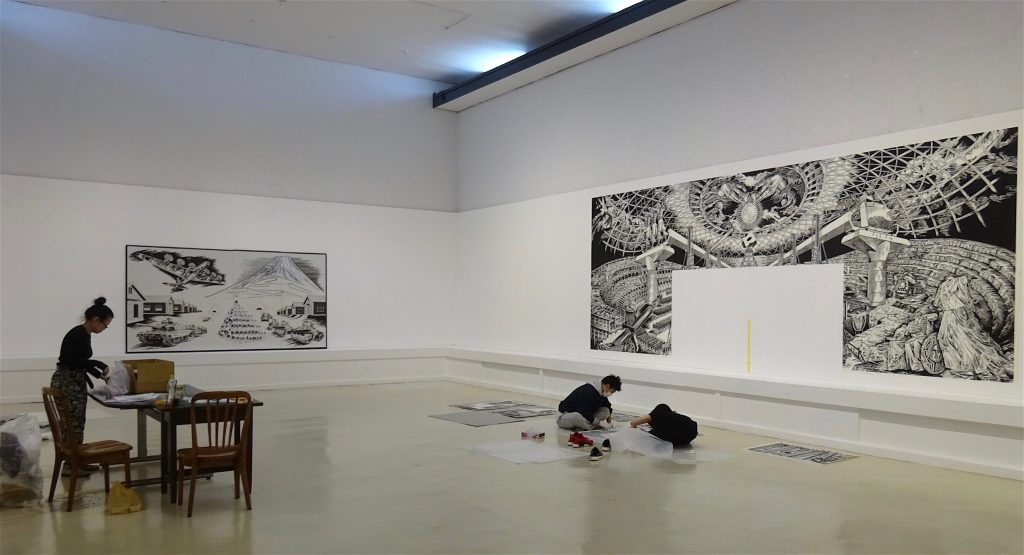
Installation process in the Maruki Museum
ヨコハマトリエンナーレ2017 「星と星座とガラパゴス」の記録画像:
http://www.yokohamatriennale.jp/2017/artist/index.html
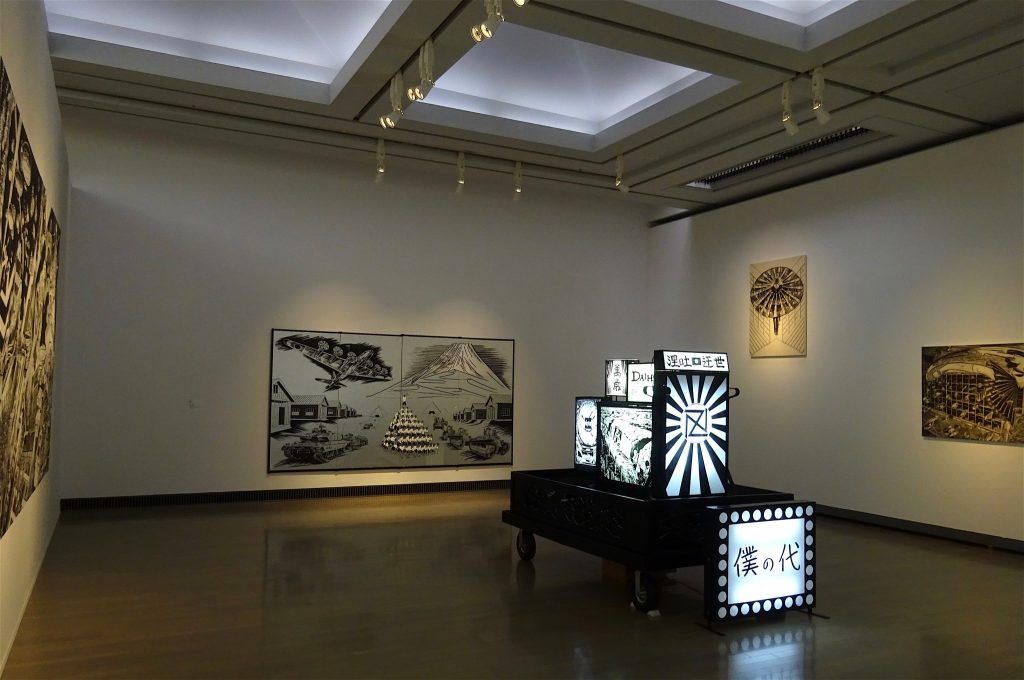
KAZAMA Sachiko’s works @ Yokohama Triennale 2017、インスタレーション・ビュー
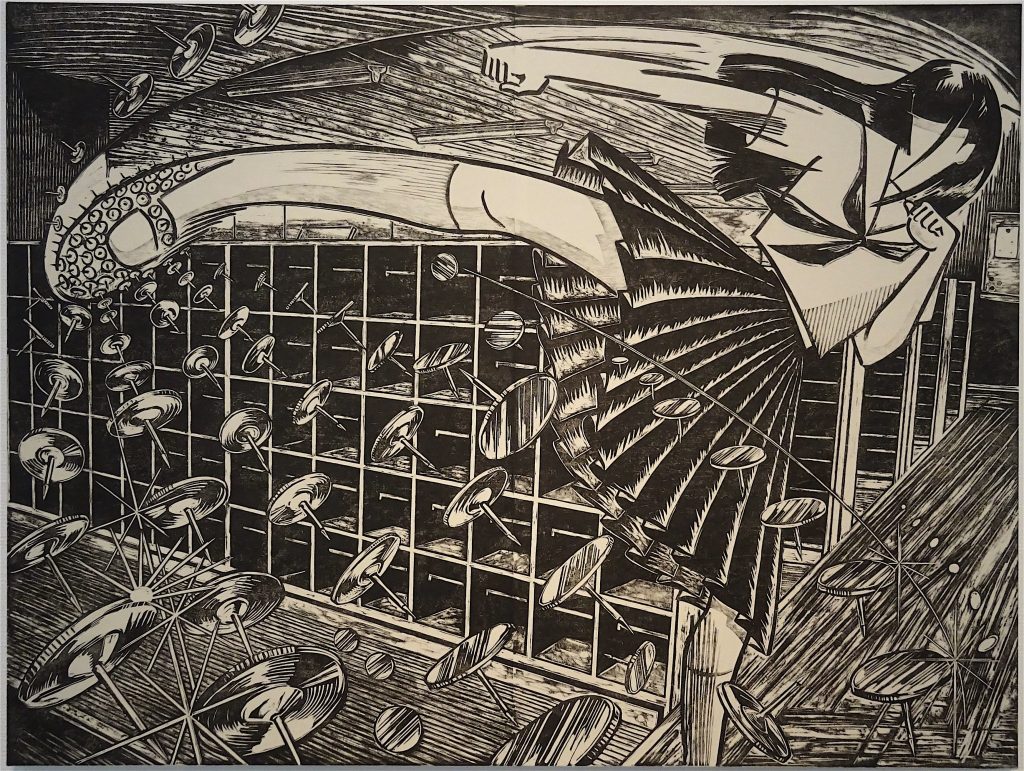
KAZAMA Sachiko 風間サチコ 「獲物は狩人になる夢を見る」2016年、木版画(パネル、和紙、墨)

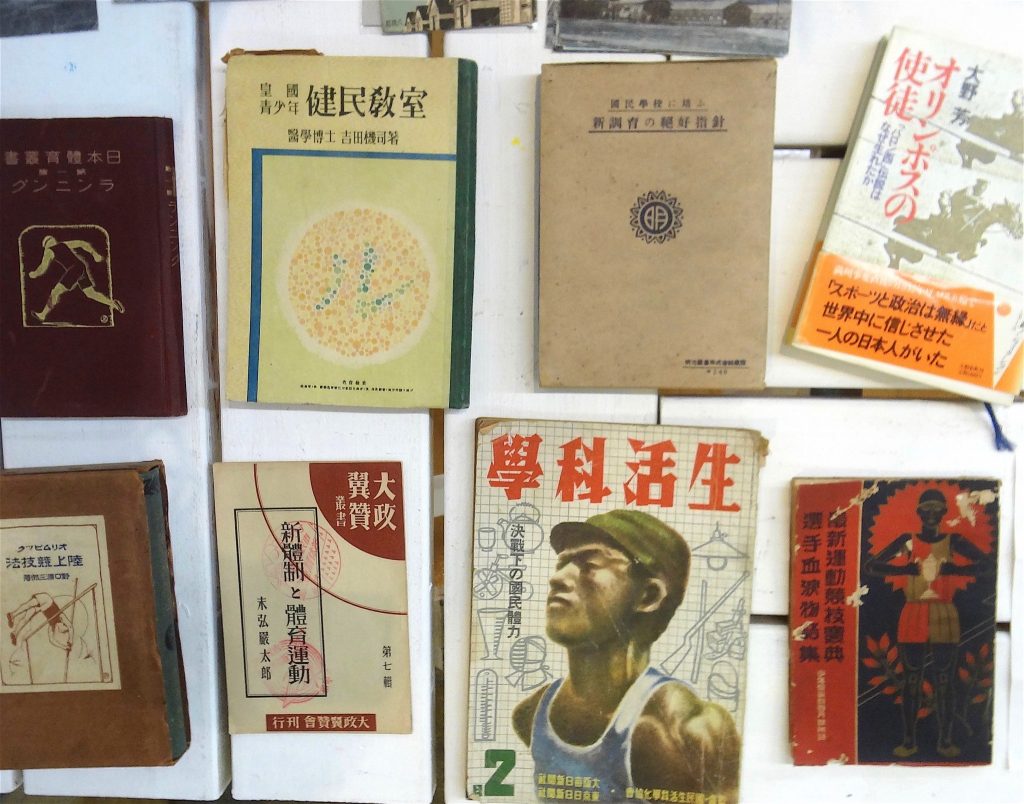
研究の資料
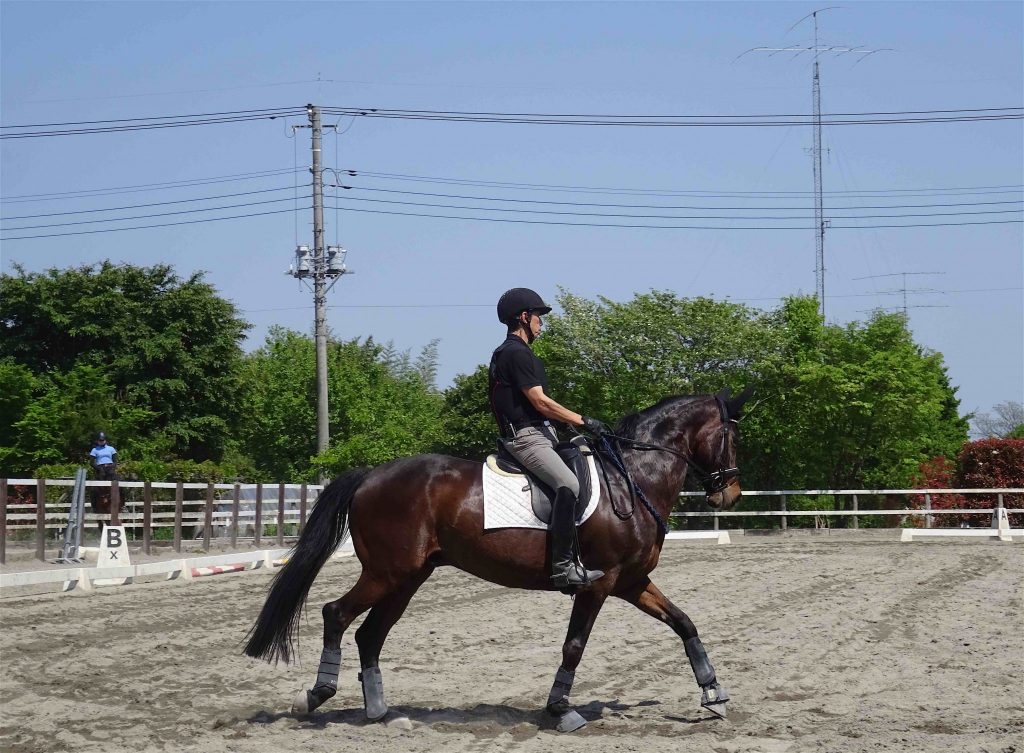
4月28日、トークイベント前、原爆の図 丸木美術館の周辺
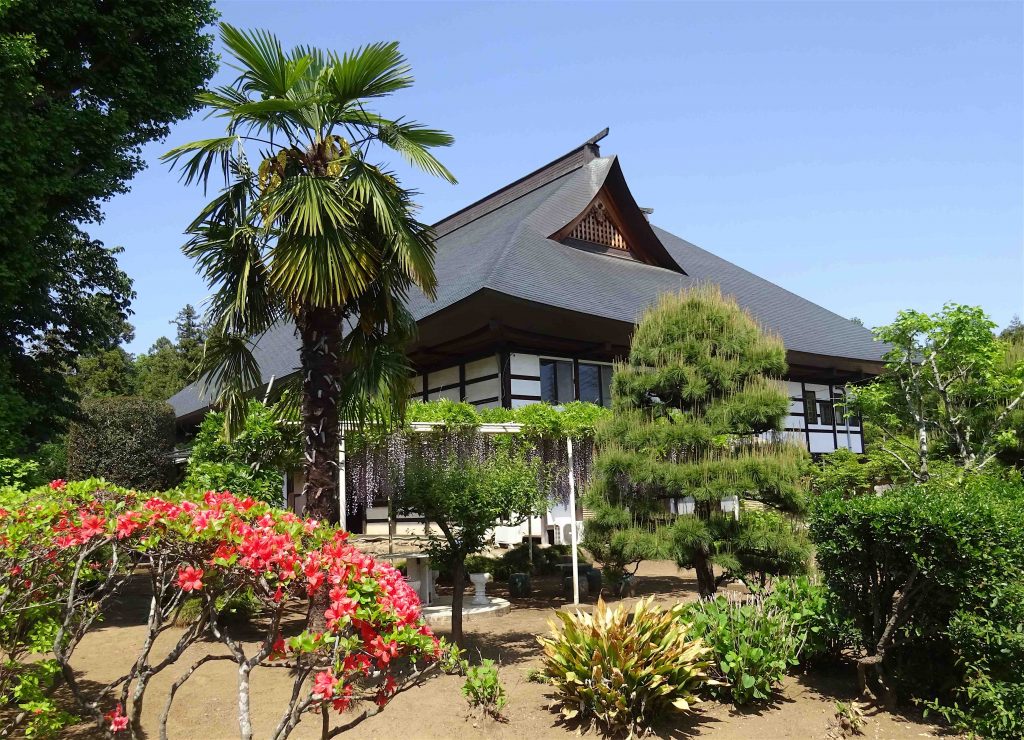
4月28日、トークイベント前、原爆の図 丸木美術館の周辺
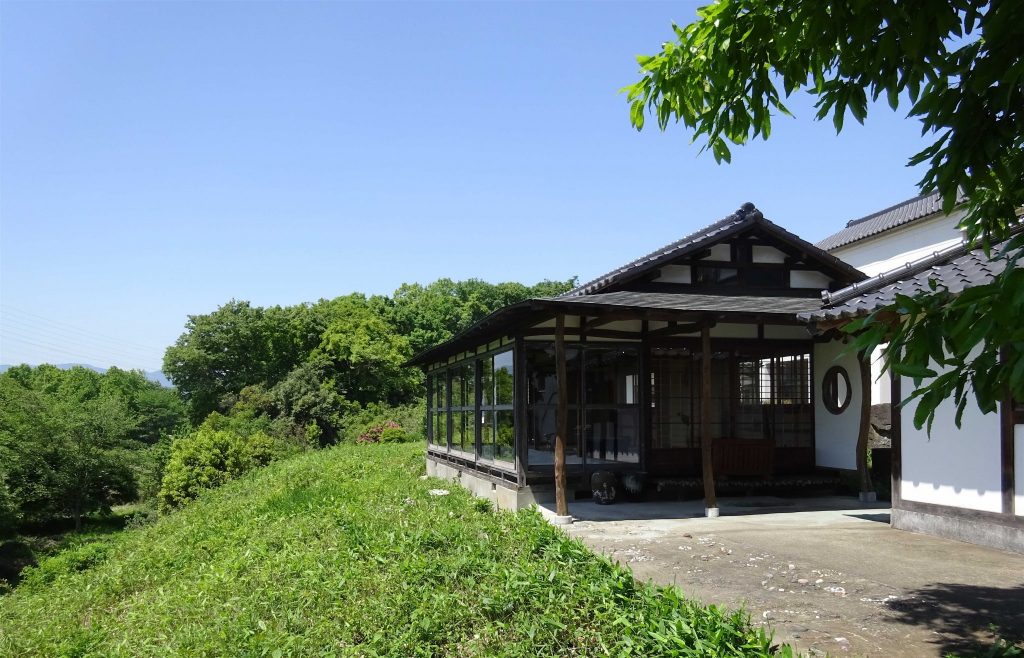
原爆の図 丸木美術館の美しい風景
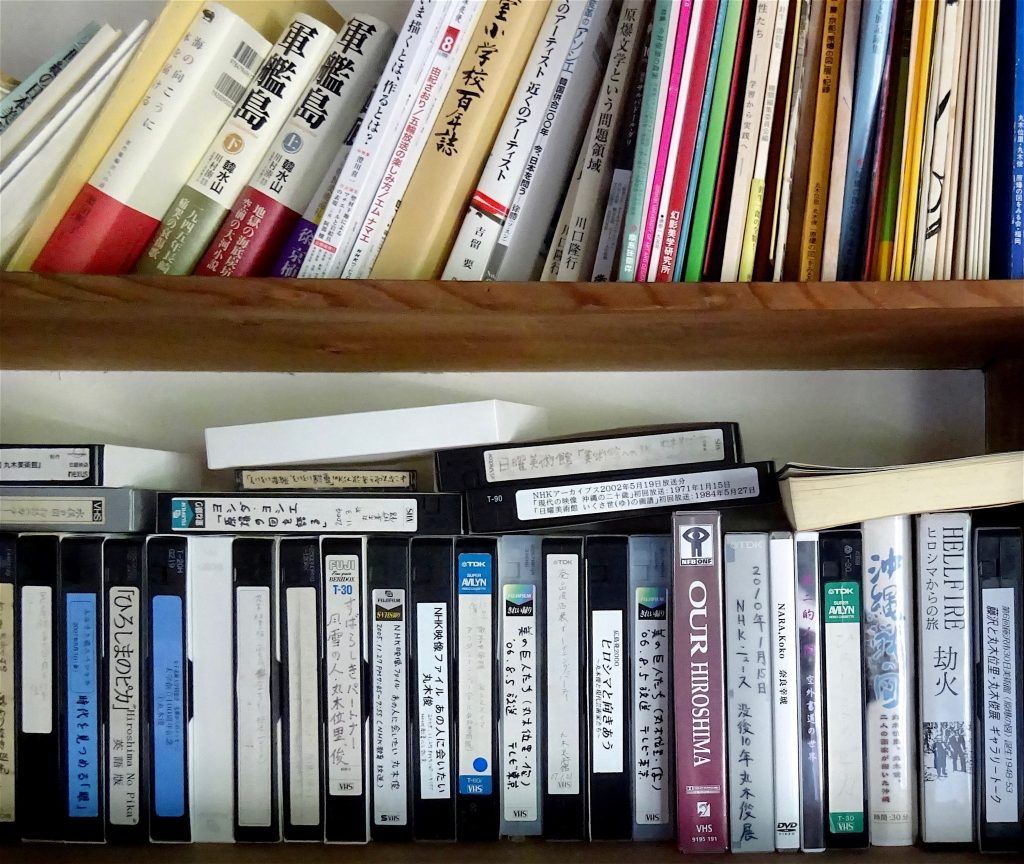
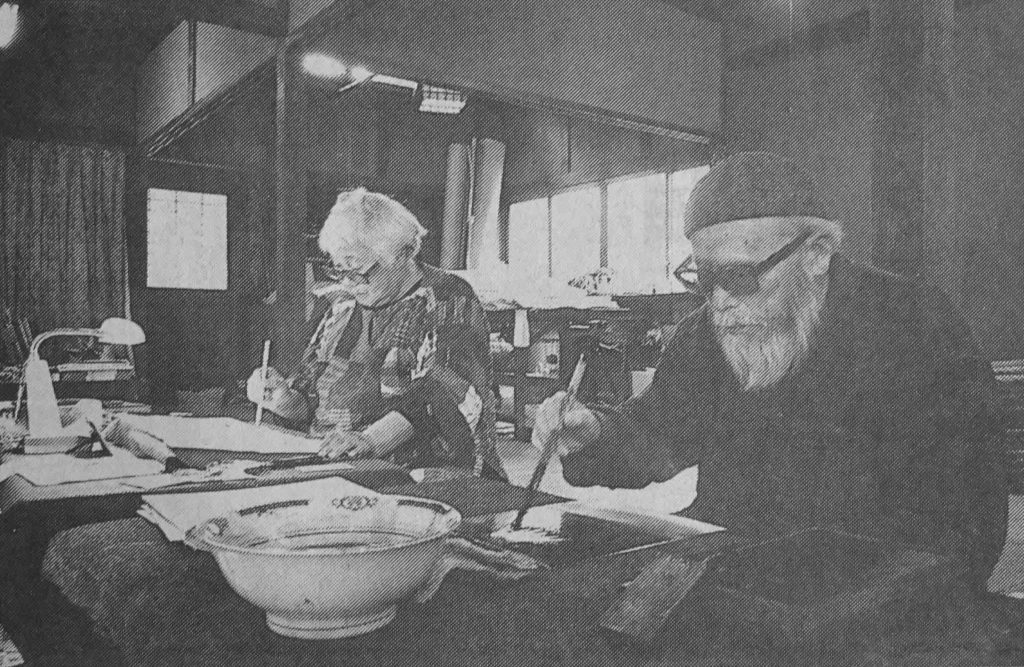
画家達 丸木俊氏 (1912-2000) と 丸木位里氏 (1901-1995)
朝日新聞、毎週土曜日の文化面で「その時」という私の連載コーナー(1992-3年) より
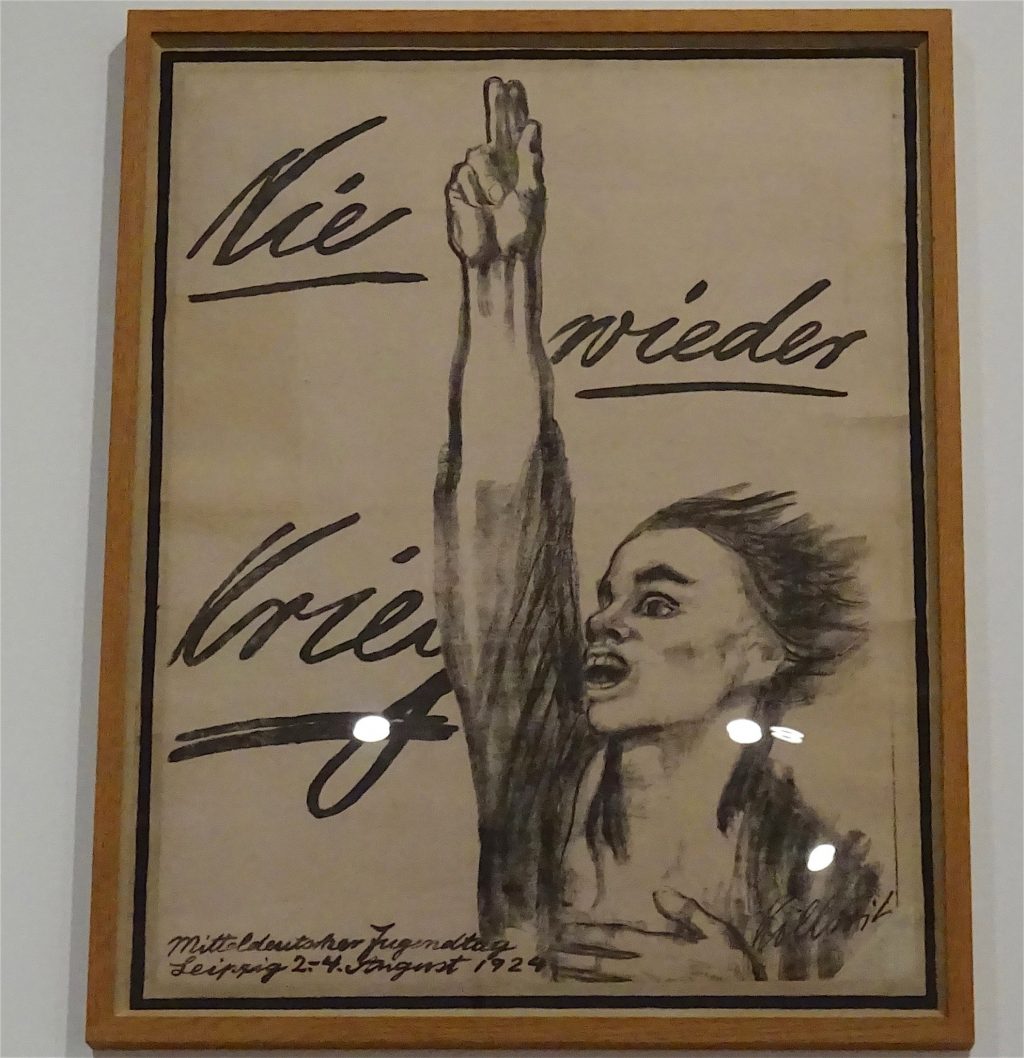
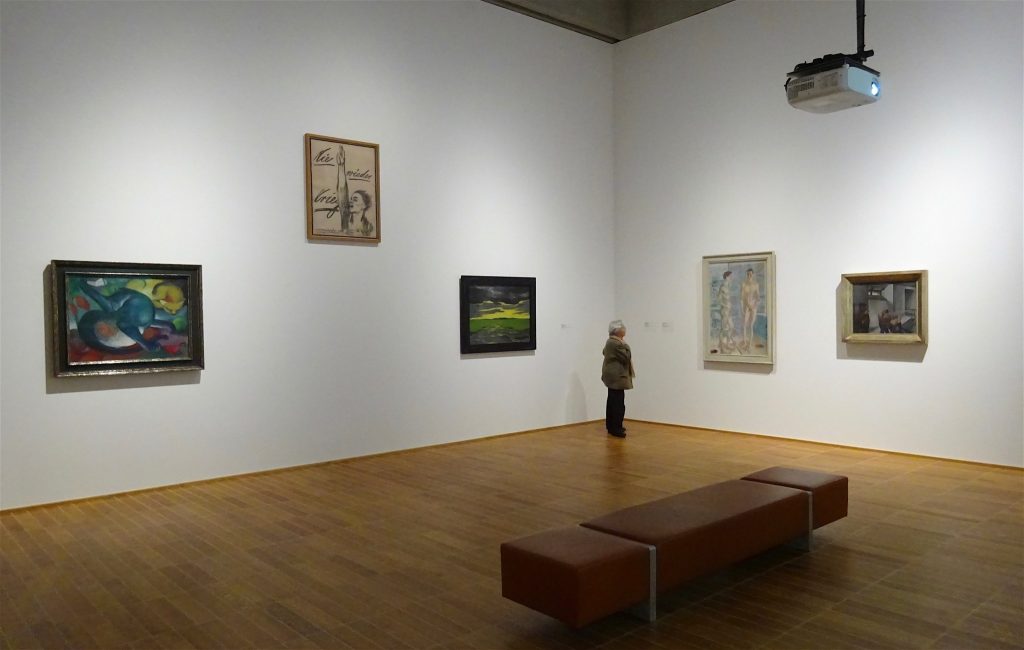
“THE MOMENTS OF THE COLLECTION – ART OF THE TWENTIETH CENTURY” @ バーゼル市立美術館、2018年5月16日
https://kunstmuseumbasel.ch/en/collection/current/sammlungsmomente
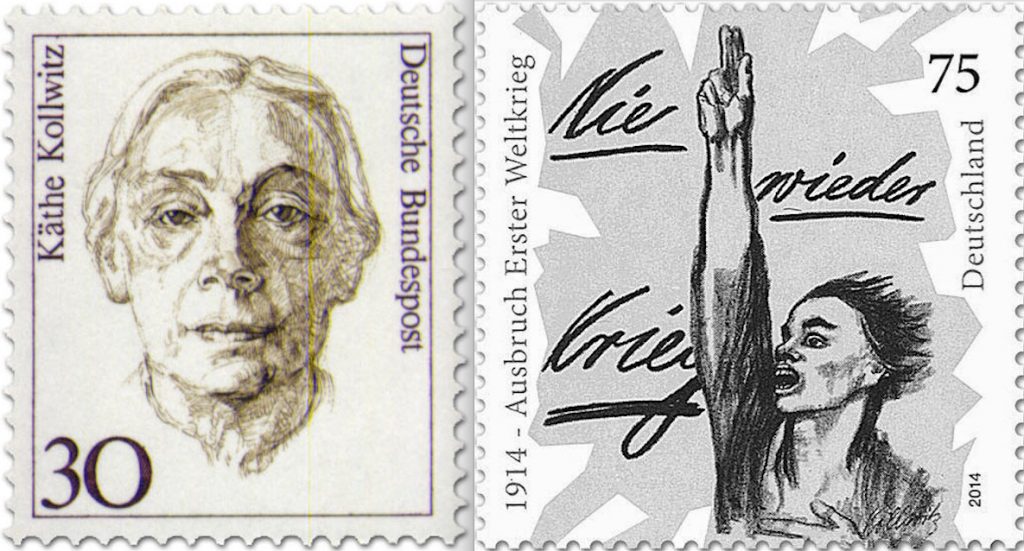
参照:
退廃芸術のアーティストたちのドイツ記念切手 (過去サイト・アーカイブの再投稿、2017年5月13日)
Deutsche Post Gedenk-Briefmarken zu Künstlerinnen und Künstler der “Entarteten Kunst” (repost from the archive, 2017/5/13)
https://art-culture.world/articles/entartete-kunst-退廃芸術-アーティスト-ドイツ記念切手/
(3:30 min)
https://ja.wikipedia.org/wiki/ケーテ・コルヴィッツ
ーーーーーーーーー
今日のおまけ:(0:42 min)
————-
アップデート

https://www2.nhk.or.jp/archives/shogenarchives/jpnews/movie.cgi?das_id=D0001300414_00000&seg_number=001
1940年(昭和15年)12月24日
2600年、一億国民の愛国の情熱は、この佳き年にあたって、いやが上にも高揚し、怒濤(どとう)逆巻く世界的混乱の中に、神国日本の聖業完遂を深く心に銘記したのであります。
「天皇陛下、万歳。」
(一同、万歳三唱)
嗚呼、感激の2600年。この佳き年に巡り会う千載一遇の国民(くにたみ)の幸。何をもってか、これに代えん。
1月14日、阿部内閣は4ヶ月の短命を米内海軍大将に譲り、新内閣は15日、その組閣を完了しました。新東亜建設の聖業完遂のために、2月22日、帝国議会は103億の膨大予算を可決。非常時国家経済はついに100億突破の新記録を作りました。
一方、支那を救うべく、敢然立った汪精衞(おうせいえい)氏は、王克敏(おうこくびん)氏、梁鴻志(りょうこうし)氏を枕頭に招き、1月24日、新しき支那の統一政権確立についての意見を交換。
かくて3月、南京に中央政治会議を開き、和平の実現、憲政の実施について重要決議を成すとともに、南京を更生支那の新首都と決定。30日、盛大なる還都式典を行い、ここに新国民政府は支那における唯一の政党政府として正式に成立しました。
超えて4月26日、国民政府還都典礼を挙行。帝国政府代表、阿部大使は祝辞を朗読。ここに日支提携の契りは固く結ばれ、善隣友好の永遠の誓いを交わしました。
この新政府運動に平行して、大陸各地の治安は次第に回復し、まず上海においては2月15日、率先してガーデンブリッジ、四川の橋の検問、通行制限の解除を断行。
続いて4月20日、広東港の開港を宣言。この広東港の開港こそ、南支貿易の中枢、珠江(しゅこう)解放の前提にして南支の復興建設を実証するものというべく、その後、この港は新政府治下の重要貿易港として日に日に繁栄を加えつつあります。
これに遅れること2ヶ月、6月20日、天津英仏租界の隔絶また解除さる。英仏側の頑迷に憤然その迷妄を覚ますべく、租界隔絶の鉄槌を降してより、実に370余日。皇軍の威武、全支に厳然たり。
内外情勢の変転に従い、7月16日、米内内閣は総辞職を決行。替わって近衛文麿公は新体制を確立すべき強力内閣を組織。
この頃から我が大陸作戦は新しい展開を示し、まず香港援蒋ルートの徹底的覆滅を図って、7月27日、香港東方60マイルの汕尾(さんび)付近に敵前上陸を敢行。またまた戦史に不朽の記録を残しました。
欧州の戦果におののき、日本の積極的攻勢に怯えるイギリスは8月13日、ついに支那駐屯軍引き揚げを断行。伝わるところによれば、これをシンガポールに送って防備拡充に充てるものという。相次いで動く極東の新体制にアメリカも支那各地から米人の引き揚げを命令。
援蒋ルート遮断に好意を示した仏印当局は、我が国との間に軍事協定を締結。支那事変完遂に協力すべきことを誓いました。ここにおいて我が皇軍の精鋭は、9月23日、堂々国境を越えて仏印に進駐。嗚呼、遠く大陸の南端、インドシナの一画に日章旗燦(さん)たり。かくてアジアの天地に黎明(れいめい)は近づき、攻勢の息吹は大地を包む。小林商工大臣は遠くバタビアに使いし、9月12日から約1ヶ月に渡って蘭印当局と経済交渉を開始。
帝国はさらに一歩を進めて、世界新秩序運動に積極的協力をなし、世界平和の将来を目指して、盟邦ドイツの首都ベルリンに日独伊三国同盟の調印を行い、全世界を驚倒せしむ。ときに9月27日午後1時、まさに外交電撃戦というべく、英米旧勢力、愕然(がくぜん)として声なし。
西南支那に残る唯一の援蒋ルートたるビルマ公路も一時、我が厳重なる抗議によって閉鎖されましたが、10月17日、イギリスはこれが再開を決行、援蒋態度をいよいよ明らかにしました。ここにおいて我は断固、実力をもって応えるべく、我が荒鷲部隊は勇躍援蒋ルート爆撃の壮途に着く。
これら英米旧勢力の事実上の退却に焦慮するイギリスは、極東の前進基地、香港、シンガポールの防備強化に狂奔し、アメリカ海軍との共同防衛案を樹立。落日の悲運これによって、果たしてその回復を見ることができるか。
一方、我が大陸作戦は着々と進行し、今なお抗戦の迷夢にふける蒋政権に徹底的打撃を加えるべく、8月初めから精鋭海の荒鷲は、重慶を数十度に渡って爆撃し、軍事都市としての機能をまったく粉砕しました。
眼(まなこ)を欧州に転ずれば、抗戦3ヶ月にしてフィンランドついにソビエトに屈す。ドイツはイギリス海軍の封鎖陣を破ってノルウェーに軍を進め、デンマークを掌中に収め、北海の海上圏を確保しました。さらにドイツはベルギー、オランダに電撃作戦を敢行。英仏の狼狽(ろうばい)その極に達し。
続いてマリノの堅陣、脆くも破れて、フランスはレイノー首相以下、奇跡の出現を祈るのみ。しかも100万の英仏連合軍は、フランダースの決戦に一敗地にまみれて、雪崩のごとく英仏海峡に潰走。ダンケルクから英本国へ、死の脱出かろうじてなる。
ここにイタリアもまた、ついに蹶起(けっき)して英仏に挑戦。欧州新秩序建設に驀進(ばくしん)することになりました。
独軍はさらに矛(ほこ)を転じて、パリーへパリーへ。6月14日、堂々とパリーに入城。先の大戦に悲嘆の涙に暮れた思い出、今いずこ。
かくてパリー入城に遅れること正に1週間、6月21日、独仏休戦条約は成立し、かつてドイツが屈辱的講和を強要されたコンピエーニュの森に歴史的調印を行いました。人変わり、星は移って、勝敗所を変えるも、所は同じコンピエーニュの、しかも同じ列車のうちにゲルマンの復讐はみごとに達成。しかも欧州の動向を決するヒトラー、ムッソリーニ両巨頭の再度に渡るブレンネル国境会談は進行。両巨頭、相会するごとにヨーロッパの歴史はその進展の速度を速め、新事態へと突入していく。
かくて欧州大戦は、ドイツの英本土上陸作戦を前に、熾烈(しれつ)なる空襲戦に転じ、イギリスの孤影、悄然(しょうぜん)として凋落(ちょうらく)の色、ようやく覆い難し。
アメリカはこれを救うべく、駆逐艦50隻をイギリスに送りました。このアメリカ国民は11月6日、ルーズベルトを三度、大統領に選び、ルーズベルトは対英積極援助を明白にしました。
ヨーロッパの新しき進展に呼応するかのごとく、11月30日、南京において日支新条約ならびに日満支三国共同宣言が調印されました。思えば日支、戦いを交えてより4星霜。聖戦に幾多の英霊を捧(ささ)げ、一億心を一にしての苦闘むなしからず、東亜新秩序の礎、ついに成る。厳然たるこの事実の前に、重慶の苦悩覆い難く、英米旧勢力の焦燥また思うべし。
かく、外において、めざましき発展を示しつつ、内には大政翼賛の新体制運動はいよいよ進展、画期的成果を収めつつあります。
(臨時中央協力会議場での宣誓文朗読)
「我々は、かしこみて大御心を奉体(ほうたい)し、和衷協力、もって大政翼賛の臣道を全うせんことを誓いまつる。」
かくて来るべき2601年こそ、未曽有の非常時局を克服し、飛躍的発展の新階段に登るべき希望の年として期待されるに至りました。
2018年10月5日のアップデート:
東京オリンピック2020年:借金を増やす
Tokyo Olympics 2020: run up more into debts
https://art-culture.world/articles/tokyo-olympics-2020-run-up-more-into-debts/
風間サチコ 展 @ 無人島プロダクション
KAZAMA Sachiko exhibition @ Mujin-to Production
https://art-culture.world/articles/kazama-sachiko-exhibition-mujin-to-production/
2019/6/1 up-date:
Tokyo Contemporary Art Awards 2019-2021
Winner 受賞者:KAZAMA Sachiko 風間サチコ、SHITAMACHI Motoyuki 下道基行
https://www.tokyocontemporaryartaward.jp/news/news_190315.html
English:
https://www.tokyocontemporaryartaward.jp/en/news/news_190315.html
受賞者インタビュー
TCAA 2019-2021
風間サチコ
https://www.tokyocontemporaryartaward.jp/winners/winner01_interview.html
Interview with award winner TCAA 2019-2021(English subtitles)
KAZAMA Sachiko
English
https://www.tokyocontemporaryartaward.jp/en/winners/winner01_interview.html#interviewLink
up-date 2019/7/4

Sachiko Kazama: Objections on paper
BY JOHN L. TRAN, JUL 2, 2019
quotes:
The number of young Japanese artists today who engage in political dissent but also have exposure in major festivals and museums, can be counted on the fingers of one hand. In Japan you can count up to 10, as opposed to Europe or the U.S., where you’d only get to five — either way, that’s pretty slim pickings.
Sachiko Kazama is a good candidate for being the raised middle finger in this small number of artists. Her epic black-and-white compositions in the jagged style of early to mid-20th-century German expressionist woodcut prints scratch at the history of Japanese fascism, refusing to let it hide behind prevarication and bad text books. In her solo show at the Gallery αM, Kazama also gamely takes a jab at the hubris of Kenzo Tange’s architecture and the vulgarity of the Olympics.
full text at
https://www.japantimes.co.jp/culture/2019/07/02/arts/sachiko-kazama-objections-paper/
—-
アップデート up-date as KAZAMA Sachiko has been nominated for the NISSAN ART AWARD 2020 (exhibition 8/1 – 9/22).
【企業】 #日産アートアワード2020 開幕
日産アートアワード2020 #おうちで美術鑑賞
https://www.nissan-global.com/JP/CITIZENSHIP/NAA/
https://www.nissan-global.com/EN/CITIZENSHIP/NAA/


In the context of Japanese anti-war museums I decided to attach the latest news about the Museum “Mugonkan” here, after Kazama’s article.
Museum of works by art students who died in war on shaky ground
By YU MIYAJI/ Staff Writer
December 5, 2020 at 18:28 JST
UEDA, Nagano Prefecture–A small private art museum here dedicated to displaying the works of Japanese students drafted as soldiers and killed on the front lines during World War II is now fighting for its survival.
The facility that opened in this central Japan city in May 1997 is called Mugonkan, which roughly translates as silent museum.
Its founder and director, Seiichiro Kuboshima, wonders how to ensure the museum and its exhibits will be passed down to future generations.
Aside from his age, the 79-year-old is in declining health.
At its peak, Mugonkan drew 120,000 visitors annually, but in 2019 only about 28,000 people showed up.
The novel coronavirus pandemic may be the final nail in the coffin. As of the end of November, the museum had only about half the number of visitors in 2019.
When it first opened, 200 or so family members of the artists whose works are on display were still alive. Now there are only six.
In late October, the beginning of the changing autumn foliage in the Shiodadaira area where Mugonkan is located, the museum had about 120 visitors even though it was a weekday.
“In winter, there are days when we have no visitors,” Kuboshima said. “I wonder if we should continue to remain open year-round when I think about the maintenance costs.”
Many of the works on display are by fledging artists who had not yet established themselves professionally. Most were probably in their early 20s and all male as they were drafted by the Imperial Japanese Army or Navy.
But statements by relatives of the slain artists about their upbringing, as well as letters sent from the front to family members and girlfriends in Japan, paint a picture of young men engrossed in their art even as Japan as a whole was marching toward war and destruction.
Ikuro Anzai, 80, director emeritus of Ritsumeikan University’s Kyoto Museum for World Peace, said Mugonkan had many fans because of its inseparable ties with Kuboshima.
The Kyoto Museum for World Peace has set aside space for an annex to the Mugonkan. Anzai also heads the Mugonkan foundation.
Kuboshima worked to open Mugonkan because he felt doing so would help him overcome his own past difficulties experienced in the tumultuous years after the end of World War II.
“I felt the contrition disappear one by one as I went around to meet with the bereaved families and was thanked by them,” Kuboshima recalled.
He has talked about that experience in speeches he gave around the nation as well as in books he wrote.
Mugonkan is registered as an ordinary incorporated foundation. It relies on donations and a 1,000-yen ($9.60) entrance fee for its revenues.
Last year, Kuboshima sold his private collection of art works to the Nagano prefectural government for about 200 million yen. While that should tide over Mugonkan for the next few years, Kuboshima said the art museum would run out of operating expenses in six years unless the flow of visitors improves.
Some people have suggested that Mugonkan depend on public funds, but Kuboshima is dead set against that idea.
“We cannot use government money to operate an art museum of students whose lives were taken away from them by the government,” Kuboshima said. “I have always felt there was significance in having the general public contribute their money.”
“Mugonkan has a huge social significance,” Anzai said. “Priority should be placed on its responsibility of passing on the memory of the war.”
With the uncertainty over Mugonkan’s future, members of the younger generation have stepped forward with ideas to help preserve the works.
In August 2019, Seina Hareyama, the president of the Koseisha publishing company based in Tokyo’s Kanda district, proposed establishing a database of the artworks and belongings of the students. Koseisha already has a well-used database of magazines published in the Meiji (1868-1912) and Taisho (1912-1926) eras.
She first visited Mugonkan in spring 2019.
“When I saw the damaged paintings, I felt there was a need to create a database of photos of the artworks and belongings so it can be viewed from anywhere,” Hareyama said.
About 600 works and belongings of about 130 art students are stored and displayed at Mugonkan.
Kuboshima’s eldest son, Kenji, 46, who heads his own information technology company, has begun working on a computer system to serve as a database containing the artworks and basic information about each art student.
Besides the artworks, Kuboshima also feels it is important to pass on factual information about the situation facing the students when they created the works and how they met their deaths.
He feels he must work fast as memories of World War II fade with each passing year.
The last thing Kuboshima wants is to have Mugonkan turned into a feel-good story about young Japanese dying graciously in war.
http://www.asahi.com/ajw/articles/13992526






—
風間サチコさんが取材されているANPOの映画:


